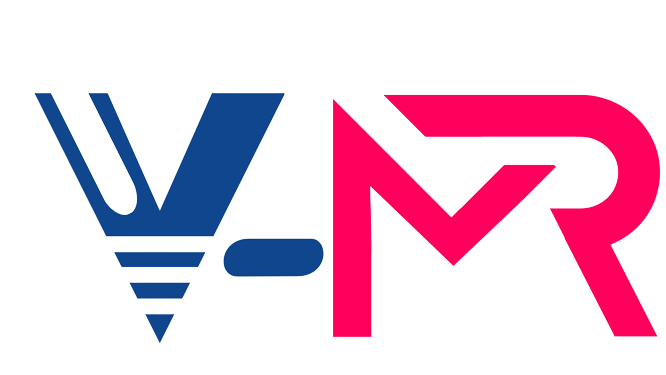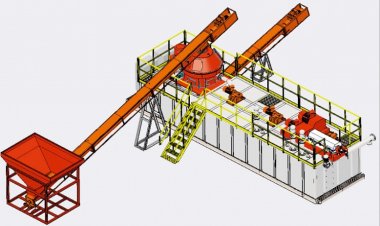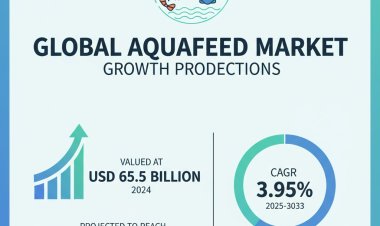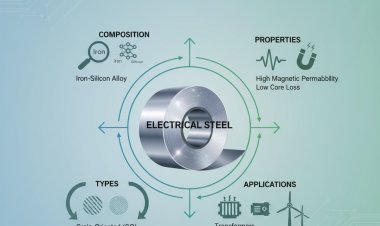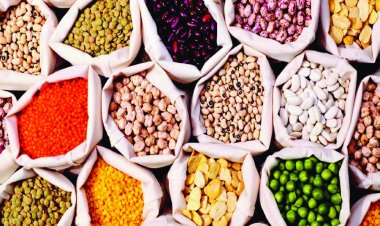Hydroponics Market Size 2023-2030: Growth, Trends, and Forecast Analysis
Explore the global hydroponics market, valued at USD 35.2 billion in 2022 and forecasted to reach USD 58.3 billion by 2030. Understand the key drivers, growth dynamics, challenges, and regional trends that shape the market.
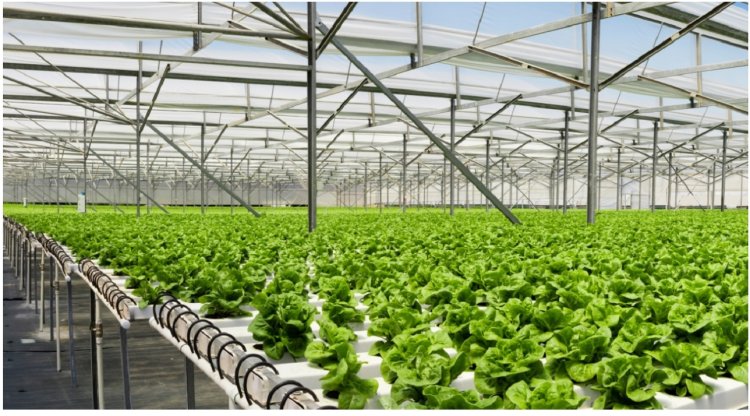
Hydroponics Market Size and Forecast
According to analysts at Vantage Market Research, the Global Hydroponics Market was valued at USD 35.2 billion in 2022 and is projected to reach USD 58.3 billion by 2030, growing at a compound annual growth rate (CAGR) of 7.5% between 2023 and 2030. Hydroponics, an innovative agricultural technique that allows plants to grow without the use of soil, has emerged as a viable solution to address the growing challenges of traditional farming. With soil degradation, water scarcity, and climate change affecting global agricultural output, hydroponics provides a sustainable alternative that ensures the efficient use of land and water resources.
The rising global population, expected to reach approximately 9 billion by 2050, and the increasing urbanization of populations are driving the demand for food production methods that utilize less space and fewer natural resources. The United Nations projects that by 2050, 75% of the world's population will reside in urban areas, resulting in a greater reliance on vertical farming techniques, such as hydroponics. With limited arable land available due to soil pollution, desertification, and changing weather patterns, hydroponic systems offer a promising solution to maintain food security and sustainability. Hydroponics has the potential to grow a wide variety of crops year-round, irrespective of weather conditions, in controlled environments such as greenhouses or indoor vertical farms.
The hydroponics market has experienced significant expansion in recent years, driven by advancements in technology that have made hydroponic farming more efficient and affordable. The reduction in water usage by up to 90% compared to traditional farming, the elimination of pesticides and herbicides, and the ability to produce crops in urban settings have made hydroponic farming highly attractive to both small-scale and commercial growers. Furthermore, hydroponics has the potential to provide higher yields, as crops grown in these systems can achieve productivity levels 2 to 5 times greater than those grown in traditional soil-based farming.
Hydroponics has evolved into a mainstream agricultural practice, being adopted by various stakeholders, including home gardeners, commercial growers, supermarkets, and restaurants. The technology is versatile, allowing for the cultivation of a wide range of crops, including leafy greens, herbs, fruits, and vegetables. As the global demand for pesticide-free and sustainably grown produce increases, hydroponics is seen as a key solution to meeting the needs of future food security. With the growing focus on sustainability and the environmental benefits of hydroponic farming, the market for this technology is expected to expand further in the coming years.
Download Sample Report PDF (Including Full TOC, Table & Figures) @ https://www.vantagemarketresearch.com/hydroponics-market-2301/request-sample
Hydroponics Market Growth Dynamics
Drivers
One of the primary drivers for the hydroponics market is its ability to conserve natural resources. Traditional farming requires significant land, water, and energy inputs. In contrast, hydroponic farming utilizes significantly less water—up to 90% less—and allows for the efficient use of land by stacking plants vertically. This innovative farming technique not only reduces the need for large expanses of land but also increases crop yields by utilizing space more effectively. For example, hydroponic systems can yield five times the produce from the same area compared to traditional soil-based farming.
Hydroponic farming is especially advantageous in areas where conventional agriculture is challenged by environmental factors such as water scarcity, soil erosion, or extreme weather conditions. By growing crops in a controlled environment, hydroponic systems can ensure consistent production throughout the year, thereby reducing the impact of unpredictable weather patterns. This is particularly beneficial for urban areas where traditional farming space is limited or unavailable.
The increasing demand for fresh, pesticide-free produce among consumers is also driving the market. Hydroponic farming eliminates the need for pesticides and herbicides, resulting in healthier, more environmentally friendly crops. The appeal of locally grown, fresh, and nutritious food has become more prominent among health-conscious consumers, further fueling the adoption of hydroponic farming.
Restraints
Despite its advantages, the hydroponics market faces several challenges, particularly the high capital investment required for large-scale operations. Setting up a hydroponic farm requires significant investment in specialized equipment, including climate control systems, nutrient delivery systems, lighting, and growing infrastructure. A 500-square-foot hydroponic system can cost upwards of USD 110,000, and larger, more automated farms can cost several hundred thousand dollars. These high initial costs may deter smaller operators from entering the market, thereby limiting widespread adoption, particularly in developing regions.
Moreover, the ongoing maintenance and periodic upgrades of the equipment are additional financial burdens for hydroponic farmers. Advanced technologies that improve yields often necessitate frequent upgrades, resulting in substantial recurring costs. As a result, the high initial setup costs and long-term maintenance may hinder some farmers from fully embracing hydroponic systems, particularly in developing economies with limited access to capital.
Opportunities
The growing interest in hydroponics presents significant opportunities for both established companies and new entrants. More than 700 companies worldwide are involved in the hydroponics sector, with numerous startups emerging to capitalize on the growing market potential. Startups such as Easy Urban Garden, WallFarm, Oasis Biotech, HydroGreen Global Technologies, and Ponix Systems are exploring various niches within the hydroponics industry, from home gardening solutions to large-scale, automated farming systems.
As demand for hydroponic produce increases, the market is likely to see higher profit margins due to the ability to produce high-quality, pesticide-free crops year-round. This will encourage more investment in research and development, thereby improving efficiency and reducing costs. Additionally, the continued development of low-cost, automated hydroponic systems will make this technology more accessible to small-scale farmers and urban growers, further expanding its market reach.
Challenges
One of the primary challenges facing the hydroponics market is the ongoing debate over certifying hydroponically grown produce as organic. In regions such as Europe, hydroponic crops are not allowed to be labeled as "organic," even if they meet other organic farming standards. This has led to confusion among consumers and could potentially limit the growth of the hydroponics market in certain regions. On the other hand, in the United States, hydroponically grown crops can be certified as organic, provided they meet other USDA criteria. The discrepancy in regulations between regions could impact the global acceptance and adoption of hydroponic farming practices.
Take Action Now: Secure Your Position in the Global Hydroponics Industry Today – Purchase Now.
Segments Insights
By Type: Liquid Systems
The liquid systems segment, particularly Deep Water Culture (DWC), is expected to grow at the highest CAGR during the forecast period. This method involves submerging plant roots directly in nutrient-rich water, allowing them to absorb the necessary nutrients for growth. DWC is renowned for its simplicity and scalability, making it an ideal choice for both home gardeners and commercial growers. This system also enables faster plant growth and higher yields, contributing to its growing adoption in hydroponic farming.
By Equipment: LED Grow Lights
LED grow lights are anticipated to be the fastest-growing equipment segment within the hydroponics market. These lights provide significant control over the growth environment, allowing growers to adjust light intensity, spectrum, and duration. LED grow lights are energy-efficient and customizable, allowing hydroponic farmers to optimize plant growth conditions and improve crop yields.
By Input: Nutrients
The nutrient segment dominates the hydroponics market in terms of market share, as essential nutrients such as nitrogen, phosphorus, and potassium are critical for plant growth. The ability to control nutrient levels precisely in a hydroponic system is one of the key advantages of this farming technique. The availability of specialized hydroponic nutrient solutions ensures that plants receive the ideal nutrient mix for optimal growth and productivity.
By Crop Type: Fruits
The fruits segment, particularly berries, is projected to grow at the highest CAGR during the forecast period. Hydroponics is ideal for growing various fruit crops, such as strawberries, blueberries, and raspberries, which thrive in controlled environments. The ability to grow high-quality fruits with minimal use of pesticides and fertilizers is driving the growth of this segment.
Region Insights
North America holds the largest share of the global hydroponics market and is expected to continue growing at a CAGR of 6.5% during the forecast period. The U.S. is the leading market in the region, driven by the increasing demand for hydroponic produce, particularly tomatoes and leafy greens. Urban farming initiatives, such as rooftop gardens in cities like New York, are contributing to the growth of the market. High-end restaurants and cafes are also driving the demand for hydroponic produce due to its superior quality and sustainability.
Europe is projected to grow at a compound annual growth rate (CAGR) of 8.2% during the forecast period. Countries such as the Netherlands and Spain are leading the adoption of hydroponic farming through large-scale greenhouse operations. Advancements in horticultural practices support the European market, favorable growing conditions, and increasing consumer demand for sustainable farming practices.
The Asia-Pacific region is expected to experience steady growth during the forecast period. Countries such as Australia and Japan are embracing hydroponics as a solution to address water scarcity and land degradation. The adoption of hydroponic technology is also increasing in Southeast Asia, where the demand for high-quality, pesticide-free crops is growing.
Hydroponics is gaining traction in South America and Africa due to its ability to reduce the reliance on water and chemicals. In Brazil, farmers are increasingly adopting hydroponic systems to enhance crop yields and minimize environmental impact. In Africa, countries such as South Africa are utilizing hydroponics to address challenges related to water scarcity and soil diseases.
For the Hydroponics Market Research Report and updates, view the full report now!
Competitive Landscape
The global hydroponics market is highly competitive and rapidly evolving, driven by continuous product innovation, strategic partnerships, and heavy investments. As the industry expands, a growing number of new players are entering the market, introducing disruptive technologies that further intensify competition and drive the overall growth of the sector. These developments reflect the growing interest in and adoption of hydroponic farming as an efficient, sustainable, and productive farming technique, particularly in urban environments where traditional agricultural space is limited.
The competitive landscape of the hydroponics market is dominated by a range of companies specializing in different aspects of hydroponic farming, from system design to technology integration. Key players include AeroFarms Inc. (U.S.), AmHydro (U.S.), Argus Control Systems Ltd. (Canada), Emirates Hydroponics Farms (U.A.E.), Freight Farms (U.S.), Green Sense Farms Holdings Inc. (U.S.), LumiGrow Inc. (U.S.), Signify Holding (Netherlands), BrightFarms (U.S.), and Infarm (Germany), among others. These companies have carved out niches by providing comprehensive solutions that encompass equipment, nutrient solutions, automation technology, and vertical farming systems, catering to a diverse range of consumers, from small-scale home gardeners to large commercial growers.
One of the standout features of the hydroponics market is its extensive focus on innovation, particularly through the integration of advanced technologies that aim to optimize crop yield, reduce water usage, and enhance system efficiency. For example, AeroFarms Inc., a leader in vertical farming, utilizes aeroponic systems that deliver nutrients to plants through mist, as opposed to traditional hydroponic methods, allowing for further reductions in water usage and space requirements. On the other hand, Signify Holding (formerly Philips Lighting) is revolutionizing the market with its LED grow lights, providing energy-efficient lighting solutions tailored to the specific needs of various crops, thereby enhancing growth cycles and improving crop quality.
The entry of Freight Farms, which specializes in shipping container farms, has brought a new dimension to the hydroponics market by offering mobile, compact farming solutions that can be deployed almost anywhere. This innovation is particularly beneficial for urban areas with limited space for traditional farming. BrightFarms, which focuses on providing supermarkets with locally grown produce through hydroponic greenhouses, is another example of how the market is evolving to meet growing consumer demand for fresh, pesticide-free, and sustainably grown food.
Strategic collaborations and partnerships are also playing a significant role in shaping the competitive landscape of the hydroponics market. In June 2024, a notable development occurred when La Sapienza University of Rome and the Food and Agriculture Organization (FAO) expanded their collaboration by launching a cutting-edge hydroponic garden on the FAO's terrace. This project aims to showcase environmentally friendly and efficient hydroponic farming methods, highlighting the increasing involvement of academic and research institutions in advancing hydroponic technologies. Such collaborations are crucial for advancing research, enhancing farming techniques, and promoting the global adoption of hydroponics.
In another development, L S Industries, Bairsen, Solan, and Punjab Agricultural University (PAU) signed an agreement in May 2024 to commercialize a new hybrid hydroponics technology. This system is designed to enhance water and nutrient permeation, as well as recirculation efficiency. The agreement highlights how the hydroponics market is benefitting from the combined expertise of various stakeholders, including private companies and academic institutions, to create more efficient and scalable solutions for sustainable agriculture.
The growing interest in hydroponics has also led to increased investments, not only from traditional agriculture and food companies but also from venture capitalists and tech-oriented firms looking to capitalize on the market's growth potential. The sector's scalability and efficiency have made it an attractive investment opportunity, with many players betting on the future of controlled-environment agriculture to address food security challenges. These investments are expected to support ongoing innovation in hydroponic systems, further reducing costs and improving yields while addressing environmental concerns such as water scarcity and land degradation.
As the hydroponics market continues to mature, competition is expected to intensify, with players focusing on enhancing their technological offerings, improving system efficiency, and expanding their geographical reach. The increasing number of startups and new market entrants will contribute to a diverse and competitive environment, fostering innovation and prompting companies to continually upgrade their products to meet the evolving demands of both consumers and the industry.
In conclusion, the hydroponics market is highly dynamic and competitive, with significant investments in innovation, strategic partnerships, and collaborative efforts. The industry's evolution is likely to accelerate as hydroponics becomes a more mainstream agricultural practice, helping address the growing demand for food and sustainable farming methods. As technological advancements continue and new players enter the market, the hydroponics landscape will likely undergo rapid transformation, creating exciting opportunities for both established companies and emerging startups.
List of the prominent players in the Hydroponics Market:
- AeroFarms Inc. (U.S.)
- AmHydro (U.S.)
- Argus Control Systems Ltd. (Canada)
- Emirates Hydroponics Farms (U.A.E.)
- Freight Farms (U.S.)
- Green Sense Farms Holdings Inc. (U.S.)
- LumiGrow Inc. (U.S.)
- Signify Holding (Netherlands)
- BrightFarms (U.S.)
- Infarm (Germany)
Segmentation of the Global Hydroponics Market
By Type
- Aggregate Systems
- Ebb & Flow Systems
- Drip Systems
- Wick Systems
- Liquid Systems
- Deep Water Culture
- Nutrient Film Technique (NFT)
- Aeroponics
By Equipment
- HVAC
- LED Grow Lights
- Control Systems
- Irrigation Systems
- Material Handling Equipment
- Other Equipment
By Input
- Nutrients
- Growth Media
By Farming Method
- Indoor
- Outdoor
By Crop Area
- Up to 1000 Square Feet
- 1000-10000 Square Feet
- 10000-50000 Square Feet
- Above 50000 Square Feet
By Crop Type
- Tomatoes
- Lettuce
- Peppers
- Cucumbers
- Herbs
- Fruits
- Other Crop Types
By Region
- North America
- Europe
- Asia Pacific
- Latin America
- Middle East & Africa
FAQ.
- What is hydroponics, and how does it differ from traditional farming?
- Hydroponics is a soil-less agricultural technique where plants are grown using nutrient-rich water. It differs from traditional farming by eliminating the need for soil, allowing for faster plant growth, higher yields, and more efficient use of resources, such as water and space.
- What are the primary drivers of growth in the hydroponics market?
- The main drivers include the need for sustainable farming solutions, increased urbanization, limited arable land, water scarcity, climate change, and growing demand for fresh, pesticide-free produce.
- How does hydroponics contribute to sustainable agriculture?
- Hydroponics reduces the need for soil, uses up to 90% less water compared to traditional farming, eliminates the use of pesticides and herbicides, and allows for year-round crop production, all of which contribute to a more sustainable and efficient agricultural model.
- What are the key challenges that the hydroponics market faces?
- The primary challenges include high initial capital investment for setup, technical complexities of hydroponic systems, lack of awareness and education, limited access to quality nutrients, and regulatory challenges related to organic certification.
- What are the major types of hydroponic systems used in the industry?
- The most common hydroponic systems include Nutrient Film Technique (NFT), Deep Water Culture (DWC), Ebb and Flow (Flood and Drain), Wick Systems, and Aeroponics, with variations depending on the crop and scale of operation.
- Which crops are most commonly grown using hydroponics?
- Popular crops grown hydroponically include leafy greens like lettuce, spinach, kale, and arugula; herbs such as basil, mint, and cilantro; fruits like strawberries and tomatoes; and other vegetables such as cucumbers and peppers.
- What is the market size of the hydroponics industry, and what is its growth forecast?
- According to analysts at Vantage Market Research, the global hydroponics market was valued at USD 35.2 billion in 2022 and is expected to reach USD 58.3 billion by 2030, growing at a compound annual growth rate (CAGR) of 7.5% from 2023 to 2030.
- What role do technology and automation play in hydroponics farming?
- Automation technologies, including climate control systems, LED grow lights, nutrient delivery systems, and AI-powered monitoring tools, are integral to hydroponics. These technologies enhance efficiency, lower labor costs, and boost yields, making hydroponics more scalable and sustainable.
- How is the regulatory landscape impacting the hydroponics industry?
- In some regions, such as Europe, there is a debate about whether hydroponically grown produce can be certified as "organic." Differences in regulations between countries (e.g., the U.S. allowing hydroponic produce to be labeled as organic while Europe does not) can impact market expansion and trade.
- What is the future outlook for the hydroponics market?
-
- The future of hydroponics looks promising due to ongoing innovations, the increasing adoption of vertical farming, advancements in nutrient and irrigation systems, and a growing demand for locally grown, pesticide-free food. The market is likely to continue expanding, driven by the need to address food security, climate change, and water scarcity.
